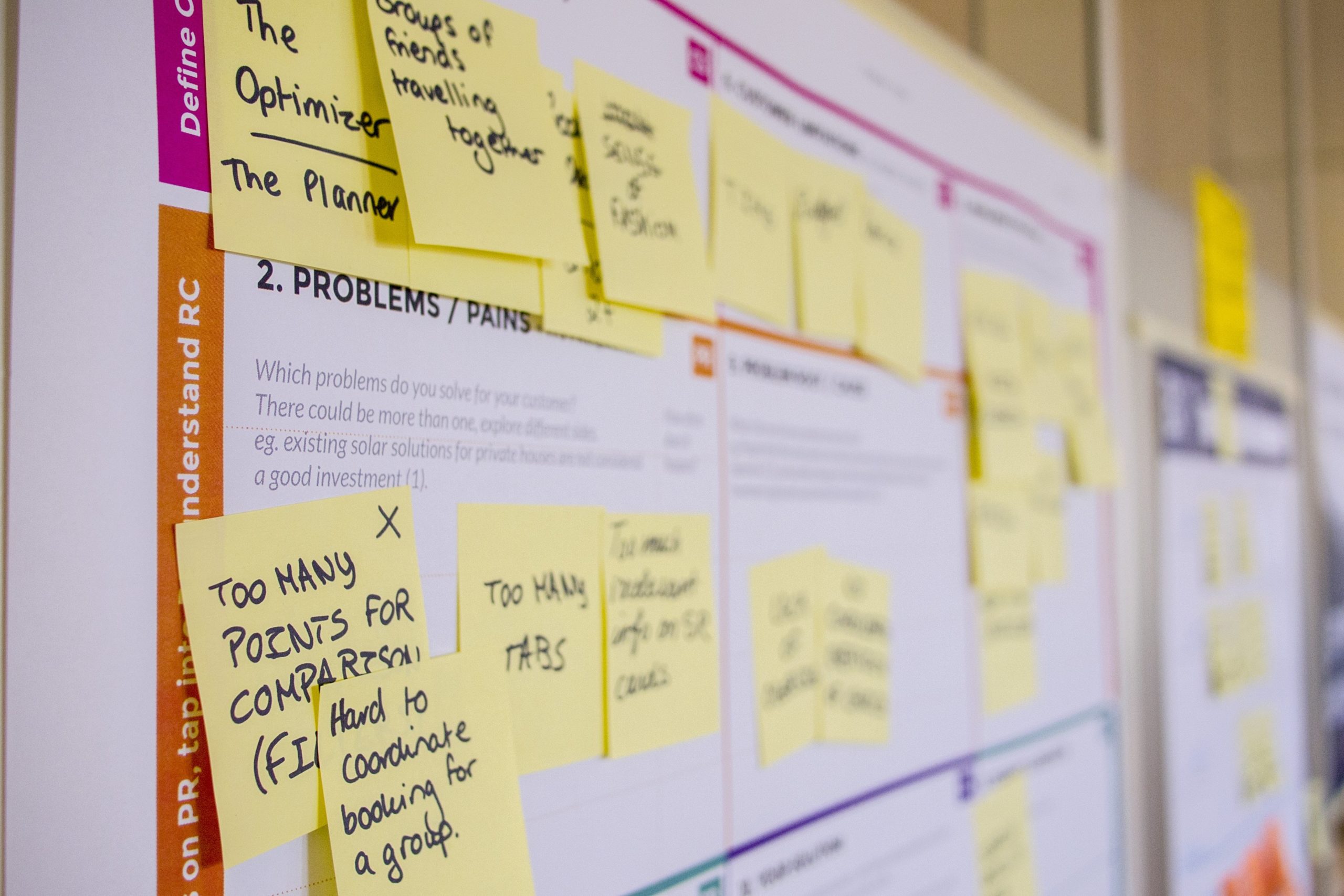- Home
- Product Management
- Product Metrics: What they are, and how to use them?
Product Metrics: What they are, and how to use them?


Finding inspirations for your research
If you too work as a PM on a digital product, you will probably find yourself between the anvil of Delivery and the hammer of Discovery on a daily basis. On the one hand, the pressure of having to release these popular features that should have been launched at least 4 sprints ago. On the other hand, the need to understand what to focus on next. You have to turn a new problem inside out, unravel it and find solutions to effectively test in a very short time. We have a series of strategies available to get there.Internal Stakeholders
The first strategy is talking to our internal stakeholders. Being experts in specific business areas, they may know some aspects of our products even better than we do. Maybe they have been in the company for longer or have intrinsic skills in the subject. They could help us identify a problem and explore potential solutions.Competitor Benchmarking
Doing Competitor Benchmarking and checking what our competitors or similar businesses to ours are doing. The aim must be to identify any solutions adopted elsewhere to understand how others have solved a given problem.User Research
The third strategy is probably the most profitable and is the focus of this article: interacting directly with our users, or potential users. We are talking about User Research and we own an interesting and relatively rich arsenal of weapons, spread across the large research spectrum. I have already disclosed it in the introduction to the article, but now let’s see it in more detail. We outline two extremes of the research spectrum: explicit User Research and implicit User Research. We find semi-explicit User Research in between.Implicit User Research
On the one hand, we find implicit User Research, which is the type of research in which we analyse data or the behaviour of users on our platform. In this case, we can learn through data tracking and analysis or through A/B or Multivariate Testing. In this type of test, the user has already come in contact with our product and doesn’t know that he/she is giving us valuable feedback. Except for the explicit consent to cookies.Explicit User Research
On the other hand, we find the explicit User Research, in which we directly speak with users making them declare their preferences clearly and openly. We can directly address them in different ways, and the best depends of course on the objective, the context and the size of the company. In a B2C context, where we need more information on the experience of those who are already our users, a Customer Survey can be a form that we send via email or that we directly show on the website. However, if we do not have a product yet or have few users, validating the existence of a given need might be necessary for us. In this case, creating a survey to be shared, for example, on Facebook groups similar to our future business is more appropriate. This category also includes Focus Groups, the feedback form on our website or the chat of our Customer Service with a user. Another example of explicit research in a B2B context is the phone calls that an Account Manager makes to his/her customers. In short, depending on the context and the knowledge the user has of the product, we can choose to use different strategies.Semi-explicit User Research
In between, we have the so-called semi-explicit tools. Usability Test falls into this category, a tool to partially or totally test the experience offered by our product. The goal is to make sure that our solution effectively meets a particular need. We may also want to learn new insights to improve in the future. In this case, a user is asked to plunge into a scenario and perform a series of tasks, while monitoring how these are performed. The user is generally asked to talk about his/her own impressions during the test. Depending on the objective of our test, the user may already know our product or have never heard of it before. The next article about the User Research will focus on this last tool, the Usability Test, and will tell you about my most recent experience on the subject,How often should you talk to your users?
In an ideal world, the answer is: as much as you can. However, in factual reality, the answer is: when you can do it quickly and easily. Or when you have the resources to do it, regardless of the nature and size of the problem you are trying to solve. Talking to users is a complex and expensive task in terms of time and both mental and economic resources if done well. You may have read that going to a café and striking up a conversation with a handful of people, asking to try your app and getting some feedback at the price of a coffee is a good start. It probably allows you to hook into a large pool of users and collect some data quickly but it is not enough.What are the main challenges?
User Research is a complex task because, first of all, you need to know the research objectives. What are you trying to find out? Which problem do you want to validate? Once you figure it out, you need to be ready to ask the right questions because you cannot afford to guess, otherwise, you are wasting time. If you have to develop a service from scratch, perhaps to integrate into the main platform, you may be interested in doing “need sizing”, and therefore understand how a given need you have identified is really a problem for your users. You also need to understand what workarounds they are using to meet that need. Keep in mind that, despite what your responder says, if a problem has a workaround it is not a problem but a hassle. And hassles have low priority. If, on the other hand, you want to integrate a feature or improve an aspect of your product because you already know it represents a point of friction, you may need at least a prototype. In any case, what you cannot ignore is a track or, even better, a script, which must be thorough and internally tested. You then have to find the users to talk to but only after you understand who the right people are. Only then you will finally be able to talk to them. You need empathy, patience and a lot of coolness because you may not like what you discover. You may not want to be alone because you are not multitasking and you cannot properly conduct a Customer Interview or a Usability Testing while taking notes. Moreover, being two will allow you to be more objective about the feedback you receive. What I recommend you to try is choosing a colleague who is not daily involved in the product to support you so that you could get an even more impartial point of view. When you think it’s over, here comes the review. You will need to review the research notes and videos, arrange all the findings and, if needed, share them legibly with any potential stakeholder.And now, the good news
If you are now thinking of giving in and opening a chiringuito in Jamaica, stop for a moment and don’t lose heart. If you are a Product Manager of a medium-large company, you can certainly count on the expertise of a UX Designer and Researcher and tools that will make things easier for you. Combining this with the experience in identifying “scrappy” yet scalable solutions to be validated, you can be sure that you will perform fairly fast tests even before you get to the implementation. On the contrary, if you work in a very small context, you can probably be a bit more flexible. Just make sure that you have always clear in mind: the research objective, and efficient track or script and the right sample to engage in the research.Customer Survey in a nutshell
Customer Surveys are a tool through which, thanks to a series of specific questions, you try to understand how much a specific problem you have identified actually represents a weakness even for a significant sample of users. Although it’s quite normal to think of this type of research as qualitative, my advice is to make it as much quantitative as possible. To do this, you need to contextualize the main problem you want to face and design a multiple-choice or closed questionnaire. You can always add space to integrate further feedback or more articulated answers. For example, if you have distributed your questionnaire randomly, add a text area after each question where you ask for more details on the answer. If, on the other hand, you are conducting face-to-face interviews, explicitly ask for a rationale for the answer given and take notes. This makes the analysis and review phase easier, allowing you to segment answers more easily. The necessary number of answers to draw significant conclusions depends on some parameters:- Size of the need you want to identify;
- Quality of the questionnaire;
- Quality of users interviewed;
- Quantity of resources you can dedicate to it.
Customer Survey: a real-life story
The digital product I work on is a platform for deals, offers and discount vouchers. The user can reorder the deals by using some filters. The main filters are their relevance, the engagement of other users or the chronological order. To simplify the user experience, I wanted to understand the potential impact of removing some of these filters that were not very used, according to Google Analytics. However, my internal stakeholders thought they were just hard to find but had a high impact on those who used them. Before puzzling over finding new A/B positions to test, I arranged a Customer Survey with my UX designer. I then sent it to a portion of users who were already using the filters. I used VWO’s Survey feature which, while not offering the best user experience, gets the job done. The survey shows up as a non-invasive widget at the bottom right of the page and can be configured from the admin panel. You can specify the portion of traffic to which the survey should be shown and target the users who visit a page or perform a specific action. These features make it a very useful tool to get targeted answers. However, you will have to implement events, reason why you may need development skills. Finally, the tool features a panel to analyse the answers. Design and Analysis Time: a little less than 2 days in total, in collaboration with a UX Designer and a Product Analyst. Execution Time: about 1 week Survey Completion Rate: ~0.1% of the portion of traffic it was shown to VWO – Admin panel of a paused Survey.Conclusions
In this first article, we have seen some strategies to learn more about your product. In particular, we focused on User Research and deepened Customer Surveys. Personally, especially if conducted online, I consider them a valid tool to talk to your users quickly and easily and to validate your assumptions. The important thing is to know what to ask and do it right. If you want to learn more about the subject, I recommend that you read the book The Mom Test by Rob Fitzpatrick, which I found absolutely pragmatic and eye-opening. Stay tuned and don’t miss my next article where I will tell you about Usability Testing, with a special focus on moderated testing. This content is powered by Product Heroes. You can read the original article published on Product Heroes’ website. Furthermore, if you are interested in learning more about product management, you can check out our ‘Product Management Master’, created in partnership with Product Heroes.
Follow:
The A / B Test Guide for Digital Product Managers
Why vs What & How: Let’s ask ourselves the right questions
Product Discovery: what it is, the method, how to organize the team
What is the role of a Data Scientist in the company?
The A / B Test Guide for Digital Product Managers

Don't Waste Your Talent. Turn It Into a Career With a Course That Fits Your Needs!
Keep reading

8 Essential Elements of Great UX Design

What is a Customer Journey Map, what it is used for and how to create it

User Research: the key to successful project development

